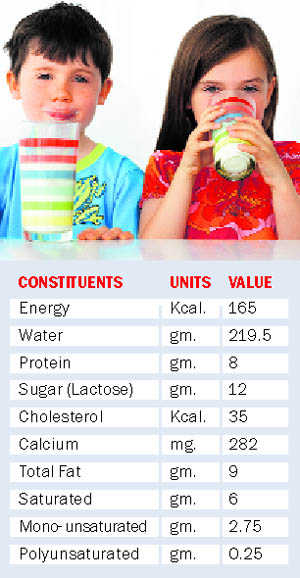This can make you drink milk — never!
All powerful animals — elephant, lion, tiger and horses — don't drink milk after weaning. If you put a bucket of milk before a cow, she'll sniff but won't drink. Humans are the only ones who drink another mammal's milk, past infancy. Human bodies are not designed to drink the milk of other mammals. Dr Bejaman Spock, America's leading authority on childcare, was one of the first to warn us against the dangers of consuming milk.
The sugar in the milk is called lactose. An enzyme called lactase, produced in the small intestines, digests the lactose in milk. When a child is 4-5 years of age, the production of lactase stops, what does this signify? It's a warning by nature that the child should not be given milk and that he should be put on solid food as in the absence of lactase, you cannot assimilate the sugar in the milk. According to a World Health Organization (WHO) report, 75% of the world population has lactose intolerance meaning they cannot digest milk.
But fat-free yogurt and butter milk can be consumed. You may ask how milk is bad, but butter milk and yogurt can be consumed. The reason is when yogurt is made, the bacteria that make yogurt produce lactase which, in turn, can digest milk's lactose. It is clear that milk has four main nutrients — fat, sugar, protein and calcium.
Milk fat: When we drink a glass of milk (250 ml) we consume 9gm of fat which, by any standard, is on a higher side. To meet the requirements of the health conscious people, the dairy industry has come out with low-fat and fat-free milk in the market. But where does this skimmed away fat go? The dairy industry uses this fat to make milk products. When you go to a supermarket, you buy fat-free milk and invariably pick up butter, cheese and ice creams also. But hardly would you know that in the process you are bringing back home the very fat which had been removed.
Sugar (lactose): You must be pleased that you are drinking fat-free milk. You must know that a glass of milk still carries 12gm of sugar which is quite high. Imagine a person drinking 2-3 glasses of milk and the amount of sugar he is pouring into his system. About 55% of the calories in the fat-free milk come from lactose.
Dairy proteins: Protein is made up of small molecules called amino acids. There are about 20 amino acids (8 essentials and 12 non-essentials) of these which make the body organs. Our body needs protein to build and repair body tissues. The animal protein is hard on the delicate kidney tissues whereas plant proteins are free from risk of kidney stones. Animal protein is called casein, a glue used in the manufacturing of wooden furniture.
Calcium: Milk and calcium are synonymous for most people. The general belief is that calcium in milk builds strong bones and protects against fractures later in life. The nurses' health study conducted by the Harvard University on the 72,337 women for about 18 years concluded that the women who drank 3 glasses of milk a day had the same risk of hip fracture compared to those who never drank it. Researchers have established that the absorption of calcium from milk is only 34% where as calcium absorption from plant is 64%. According to Indian Council of Medical Research (ICMR'S) “recommended dietary allowance for Indians”, is 400mg per day which we can easily get from plant sources.
— Harmohan Dhawan is ex-Civil Aviation Minister and Sheenu Aggarwal is director of a nature cure organization










